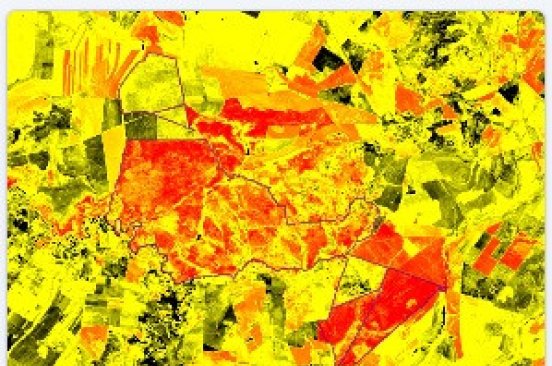
The Southern African Drones, AI, and GIS for Disaster Risk Management Conference 2024
Co-organized by South Africa Flying Labs, the conference was a melting pot of innovation, collaboration, and thought-provoking discussions.
May 30th, 2025
Imagine standing amidst experts, innovators, and policymakers, all sharing the goal of using technology to save lives. This is what it feels like to attend the Southern African Drones, AI, and GIS for Disaster Risk Management Conference. Co-organized by South Africa Flying Labs and QP Drone Tech, WeRobotics, and Esri, the 2024 conference brought together brilliant minds to explore how emerging technologies can transform disaster risk reduction in the region.
For the past three years, Cape Town, South Africa, has been the home of this groundbreaking conference. Now, as we approach our fourth edition in KwaZulu-Natal (Durban) – a region often battered by devastating floods – the significance of our work has never been clearer. Last year, we focused not only on the conference but went beyond theoretical knowledge by offering two-day hands-on GIS workshops and drone demonstrations that allowed participants to witness the use of drones, GIS software, and AI. This was held at the prestigious Stellenbosch University.
Our host, Ms Queen Ndlovu (CEO of QP Drone Tech and Managing Director of South Africa Flying Labs) opened the conference with a bang, highlighting the importance of empowering communities through technology. In her words, “If a drone can lift a 5kg payload, imagine what it can do for someone’s future."

Disaster Risk Reduction: A Global Imperative
Globally, disasters – both natural and man-made – pose an increasing threat. According to the United Nations Office for Disaster Risk Reduction (UNDRR), economic losses from climate-related disasters have soared over the past two decades, reaching $2.97 trillion globally (UNDRR, 2023). Africa is highly vulnerable due to limited resources and weak early warning systems (EWS). In South Africa alone, the 2022 KwaZulu-Natal floods caused damages exceeding R17 billion and claimed over 450 lives (SA National Treasury, 2023).
The urgency to adopt effective early warning systems and Leave No One Behind principles has become a global priority, with UNDRR leading the charge. Their Sendai Framework for Disaster Risk Reduction (2015-2030) calls for strengthened multi-hazard early warning systems to mitigate disaster impacts. It is within this framework that our annual DRM conference finds its mission: bridging technology and disaster preparedness.
Highlights from the 2024 Conference
This year’s conference was a melting pot of innovation, collaboration, and thought-provoking discussions. Different stakeholders, from high-level government officials to grassroots community leaders, came together to explore how cutting-edge technology can build resilience against disasters.
According to Mr Jack Shilubana, COO of QP Drone Tech and South Africa Flying Labs, “It was like a dream.”
You will need to give cookie consent in the Experience option to see this video. Click the cookie link at the bottom right of the page to change your preferences.
Special Thanks to Our Sponsors and Strategic Partners
We are incredibly grateful to Esri for their support! As a global leader in geographic information system (GIS) technology, Esri has been instrumental in transforming the way we collect and use spatial data for real-world impact. South Africa Flying Labs and QP Drone Tech are forever grateful to Olivier Cottray, who has been a partner with social impact in mind for the past three conference installments.
We extend our deepest gratitude to WeRobotics for their unwavering support and dedication to supporting local expertise in drone, data, and AI technology. WeRobotics, represented by Ms Sonja Betschart, Mr Kenneth Ramah, and Mr Dan Muniu, played a significant role in making this conference a huge success, growing the conference to welcome the entire SADC region and facilitating the presence of valued sponsors. South Africa Flying Labs and the Flying Labs community are in good hands.
Importantly, the global Flying Labs Network has played a crucial role in advancing our mission to drive innovation, education, and impact through drone technology and other emerging technologies.
At QP Drone Tech and South Africa Flying Labs, we are committed to using cutting-edge drone technology to drive innovation, efficiency, and social impact. Our mission is made possible by incredible partners who share our vision – like Wingtra!
We want to express our sincere gratitude to Wingtra and Karsten Robbins for their support and for providing industry-leading drone solutions that are revolutionizing the way we collect and analyze aerial data.
Risk management and drone technology go hand in hand, and Santam Insurance has been a game-changer in promoting safer and smarter applications of drone services. Their support has empowered us to expand our disaster relief initiatives and ensure a greater impact in vulnerable communities.
We are also incredibly grateful to Lenovo, whose expertise in computing and Innovation was vital in making our workshops a success. Their dedication to providing computers aligns perfectly with our vision when it comes to tech.
Regional Centre for Mapping of Resources for Development (RCMRD)
We extend our deepest gratitude to RCMRD for their support, expertise, and dedication to advancing geospatial technology for sustainable development. Their leadership in mapping, remote sensing, and data-driven decision-making is transforming industries and communities across the region.

A big thank you to our technical partners:
- Spencer Horne, Cloudline, who showcased his airship innovation and offered transport and catering at the Cloudline farm.
- Dexter Tangocci, Integrated Aerial Systems, for his unwavering support, providing water during disaster scenarios.
- Fabian Higgins, Western Cape Health Department, whose excellent team has played a crucial role for the past three years. We are humbled by their support.
To all the municipalities that were present, from national to provincial (Amathole District Municipality, Capricorn District Municipality, Vhembe District Municipality, Cooperative Governance and Traditional affairs), we are grateful for the support.
We encourage our community to show appreciation by following our sponsors on social media and exploring their services. Their support is helping drive innovation and transformation in the drone industry!
Once again, thank you to our amazing sponsors for believing in our mission. We look forward to continuing this journey together!
Our Keynote Speakers
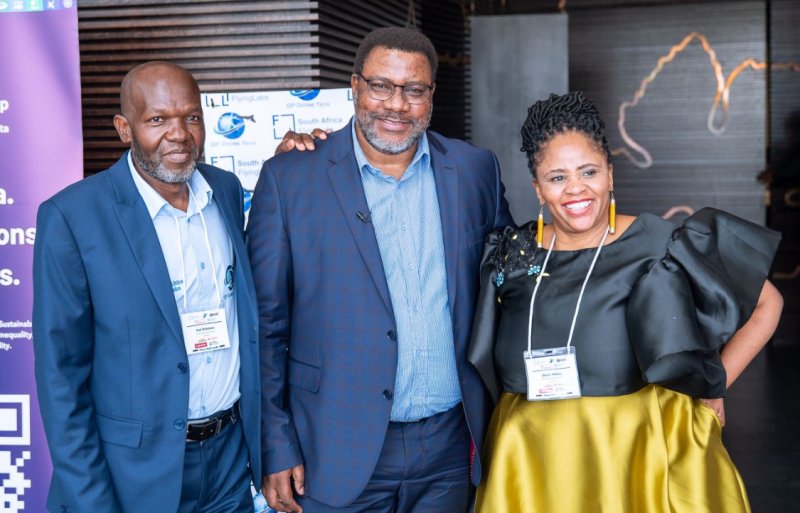
The conference welcomed the Director-General (DG), Department of Cooperative Governance and Traditional Affairs, Mr Mbulelo Tshangana. Alongside him were esteemed experts such as:
- Dr Elias Sithole, Head of the South African National Disaster Management Centre
- Mr Darryl Epstein from Delta Scan
- Ms Ireen Mutombwa-Shumba, Red Cross South Africa
- Mr Rudzani Malala, South Africa Weather Service
- Mr Patric McKay, World Food Program
- Mr Divan De Bruyn, GeoArc
- Mr Nepal Khoza, Santam
- Mr Sam Twala, Ntsu Aviation
- Mr Ernest Khosa, Chairperson of South African Civil Aviation Authority
- Mr Lobang Thabantso, South African Civil Aviation Authority
- Mr Leka Tingitana, Tanzania Flying Labs
- Ms Phuti Rampya, Capricorn District Municipality.
These thought leaders shared groundbreaking insights into the evolving role of drones and AI in disaster response.
South Africa must move beyond reactive disaster response and embrace predictive technologies to safeguard our communities.
— Mr Mbulelo Tshangana, Director-General, Department of Cooperative Governance and Traditional Affairs
We also had other Flying Labs participating in this conference. We are truly grateful to Zambia, Zimbabwe, Botswana, Namibia, Tanzania, Nepal, and Nigeria Flying Labs. The Flying Labs Network embodies the spirit of local expertise, global impact. Through this powerful community, we have been able to:
- Exchange knowledge and best practices in drone technology, data analysis, and humanitarian applications.
- Collaborate on cross-border initiatives that drive innovation in disaster response, agriculture, environmental conservation, and public health.
- Support and uplift each other through training, mentorship, and resource-sharing.
- Strengthen our collective impact in making drone technology more accessible and locally led.
We also had a few members from SADC Humanitarian and Emergency Operations Centre (SHOC) and the NDMAs of other SADC countries. They were part of the panel discussion on geospatial methods for regional disaster risk management.
- South Africa - Mr Thabo Khupari
- Zambia - Mr Malic Chishimba
- Malawi - Mr Hanke Ndau
- Eswatini - Mr Siboniso Mavusa
- Namibia - Ms Mercy Mahoto
Interactive Workshops
Beyond discussions, the conference featured hands-on workshops led by Esri and supported by WeRobotics. These sessions provided practical demonstrations of GIS applications for emergency planning and resource allocation.
Concurrently, South Africa Flying Labs and QP Drone Tech led drone demonstrations, focusing on drone piloting for real-time disaster mapping and AI-driven risk assessment models.
Participants, ranging from municipal disaster managers to tech developers, gained firsthand experience in deploying these technologies in real-world scenarios.
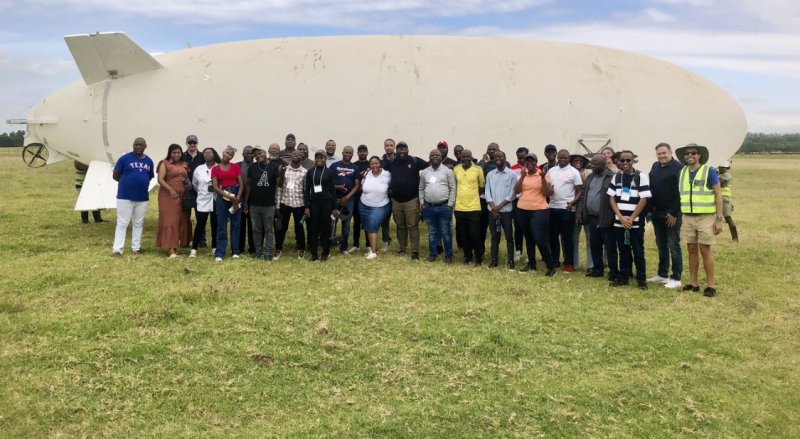
Panel Discussions: Municipalities Taking the Lead
A key highlight was the panel on Municipal Disaster Preparedness, featuring representatives from disaster-prone regions such as the Gauteng Disaster Management Centre. The discussions focused on integrating technology into municipal disaster plans and addressing funding challenges.
With climate change intensifying, municipalities must adopt tech-driven solutions to mitigate risks. Drones are no longer a luxury but a necessity in early warning systems.
— Municipality Representative
Networking and Collaboration: Where Ideas Turn into Action
The SAFL conference has always been a catalyst for new partnerships. This year, NGOs, academic researchers, and government officials connected to discuss potential projects, including:
- A drone-enabled flood monitoring initiative in the Eastern Cape
- A pilot project for AI-powered landslide prediction in Limpopo
- Strengthening GIS adoption within rural disaster management programs
These collaborations are proof that the conference isn’t just about discussions but also about driving real-world impact.
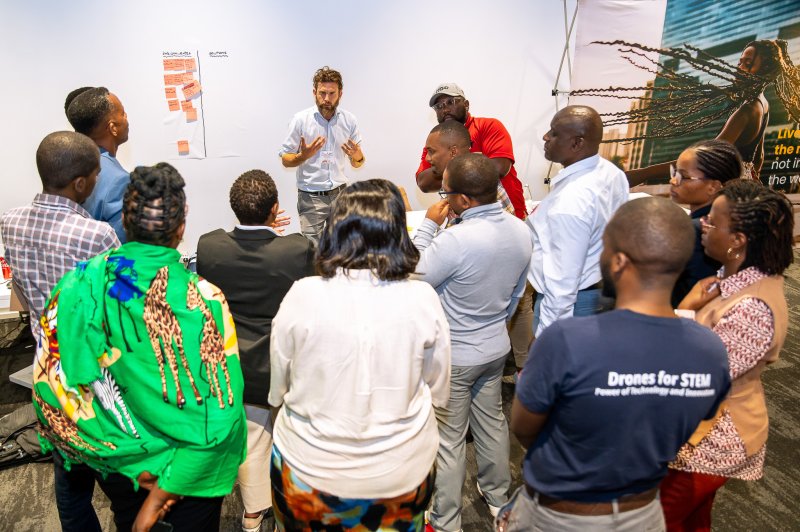
Entertainment
Sonja Betschart, Co-pilot of WeRobotics, spotted a beautiful, talented group from Khayelitsha Township when they were performing at Waterfront Cape Town. This cultural group performed at our remarkable dinner while our guests sipped on all types of wine harvested from the lovely gardens of the Hazendal Golf and Wine Estate, which served as our conference centre.

We are incredibly grateful for Isibane seAfrica, an NPO facilitated by Zolani. Thank you for bringing joy to our conference.
The Power of Drones, AI, and GIS in Disaster Risk Reduction
Drones have become indispensable in disaster response. Some of the ways they are currently used in disaster management include:
- Rapid damage assessment: Quickly identifying collapsed buildings, blocked roads, and affected areas.
- Search and rescue operations: Deploying thermal imaging drones to locate survivors in inaccessible areas.
- Humanitarian aid delivery: Transporting emergency medical supplies and food to disaster-stricken zones.
Drones are fundamentally reshaping how we assess, respond to, and recover from disasters—providing faster, safer, and more cost-effective solutions.
— Kenneth Ramah, WeRobotics
Articifical Intelligence has transformed disaster risk assessment by analysing vast amounts of data in real-time. During the conference, discussions centered on how AI is being leveraged to:
- Predict disasters before they occur using machine learning models.
- Process satellite imagery to assess damage faster than manual evaluations.
- Automate resource allocation during emergency responses.
With initiatives such as UNDRR’s Global Risk Assessment Framework, AI is playing a growing role in shaping evidence-based disaster policies.
Geographic Information Systems remains a cornerstone of disaster risk management by providing spatial insights critical for decision-making. Discussions at the conference showcased how GIS is being used for:
- Identifying high-risk areas prone to flooding, fires, and landslides.
- Tracking real-time disaster evolution through drone and satellite data integration.
- Optimizing evacuation planning by mapping safe escape routes.
One of the most compelling moments came from a GIS specialist from Esri, who demonstrated how live drone feeds can be overlaid on GIS platforms to provide instantaneous situational awareness for disaster response teams.
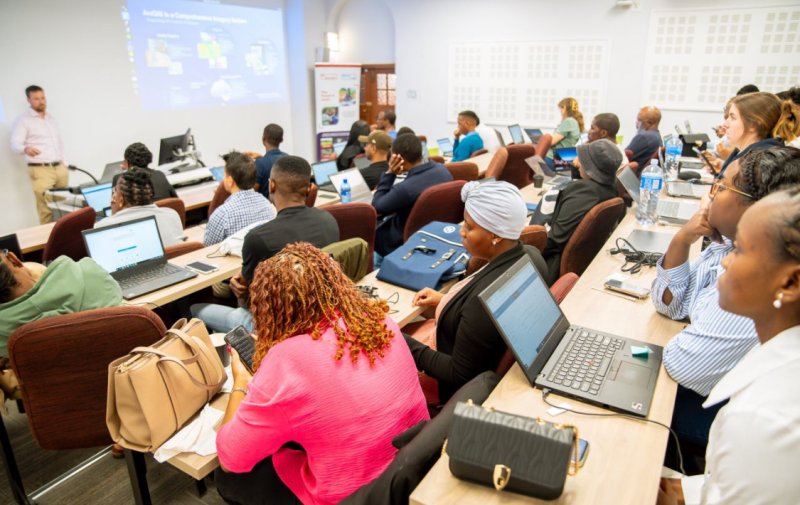
South Africa’s Commitment to Disaster Preparedness: Insights from the 2025 Budget Speech
The 2025 South African Budget Speech underscored the country's growing investment in disaster resilience. Finance Minister Enoch Godongwana announced an increase in disaster relief funding, emphasizing the role of technology in mitigating climate-related disasters.
Notably, the budget highlighted:
- R2.5 billion allocated to early warning systems and disaster recovery.
- A national strategy to integrate AI and drones into municipal disaster response plans.
- Increased funding for GIS-driven climate risk assessments.
These commitments align with South Africa Flying Labs’ mission and reaffirms that South Africa is embracing technology-driven solutions for disaster management.
A Future of Innovation and Resilience
As the conference continues to grow, so does its impact. Every year, new ideas emerge, partnerships strengthen, and communities become better equipped to face disasters head-on.
Technology alone won’t save lives, but people using technology the right way will.
— UNDRR Panelist
This is the heart of what we do at South Africa Flying Labs: empowering people with the tools to build a safer, more resilient future.
South Africa Flying Labs in partnership with QP Drone Tech cannot wait to host the 4th installment later this year of the Southern African Drones, AI, and GIS for Disaster Risk Management Conference.
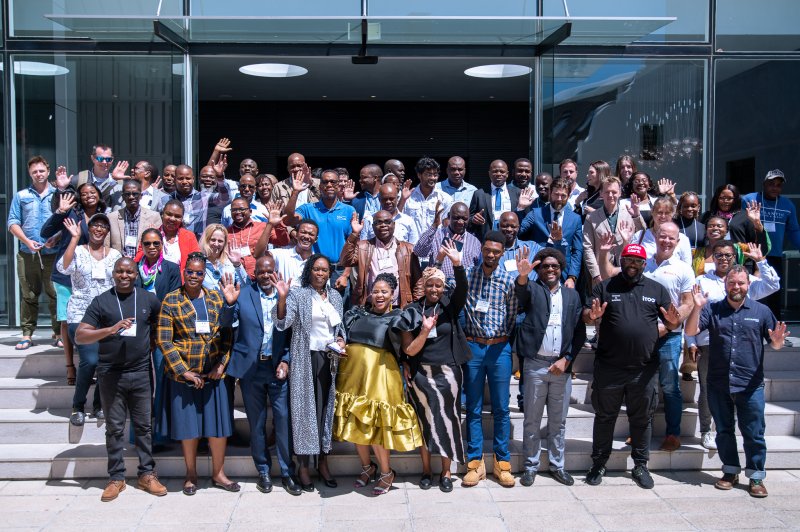
References
- UNDRR (2023). The Sendai Framework for Disaster Risk Reduction (2015-2030). Retrieved from https://www.undrr.org
- SA National Treasury (2023). KwaZulu-Natal Floods: Economic and Infrastructure Impact Report. Retrieved from https://www.treasury.gov.za
- WeRobotics (2024). SAFL Conference Report on Drone Use in Disaster Risk Reduction.
- South African Budget Speech (2025). National Disaster Resilience Budget Allocation. Retrieved from https://www.treasury.gov.za
- Conference highlights: https://lnkd.in/d3TJkAUh
Category(s)
Location(s)
Recent Articles
View All »
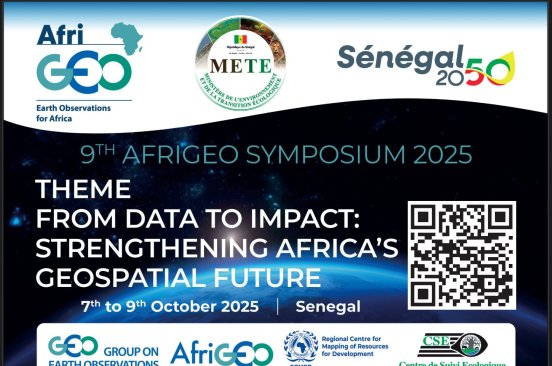
AfriGEO 2025: How Senegal Flying Labs is Helping Shape Africa's Geospatial Future
